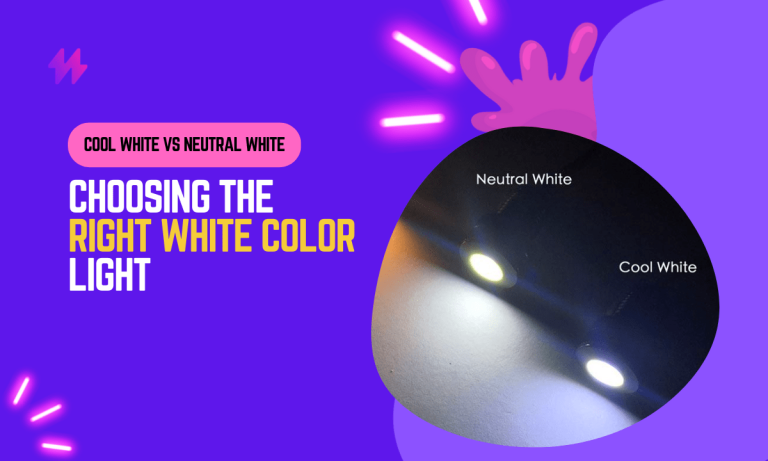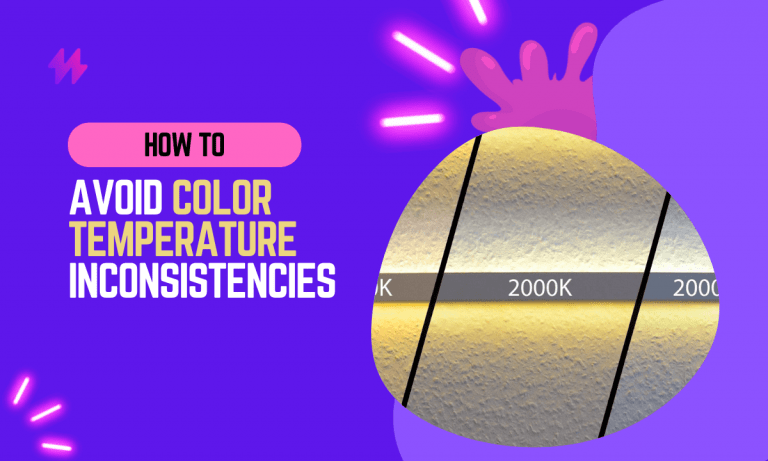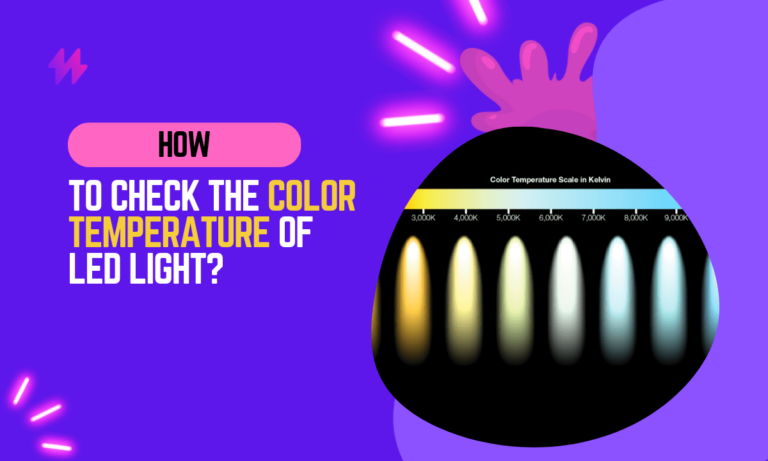How to Choose a Bedroom Lighting Color Temperature in 2023
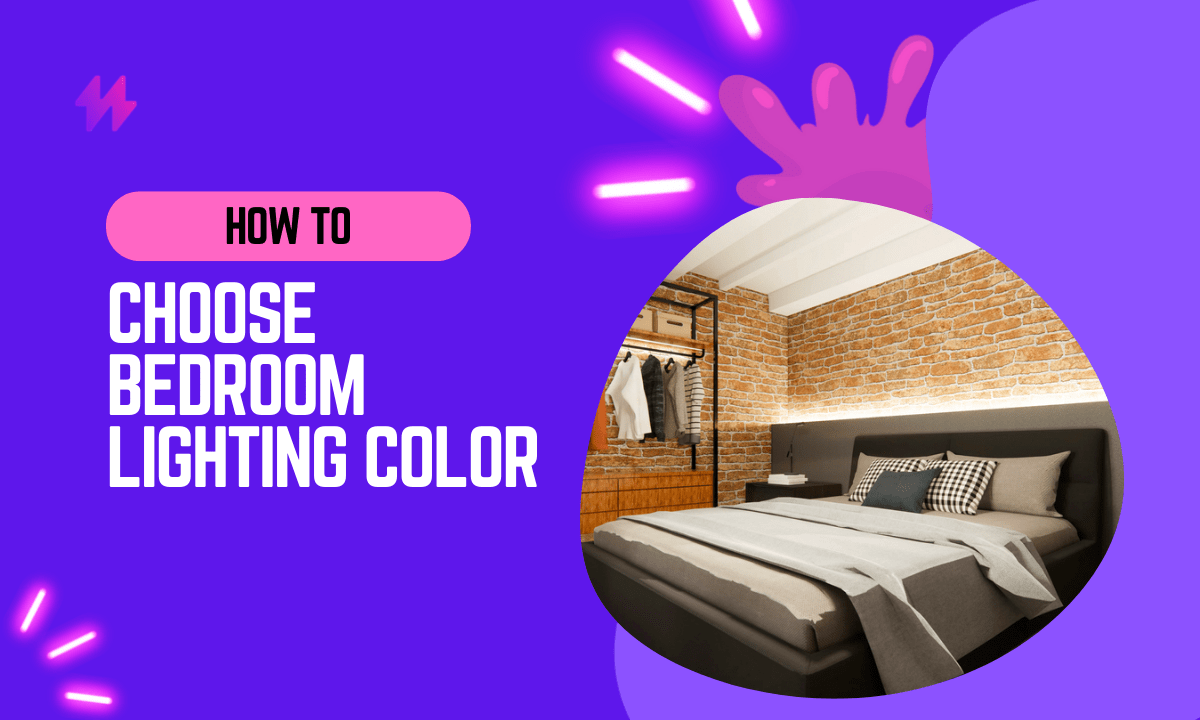
Bedrooms are special places in our homes. They’re where we go to relax and recharge, so it’s important that the lighting is just right. Not too bright, not too dark – just perfect for getting a good night’s sleep. But how do you find the right balance? And what factors should you consider when making your decision?
In this article, we’ll explore the different types of bedroom lighting available, and we’ll discuss the factors that you need to take into account when choosing the right one for you. We’ll also look at some examples of bedrooms with different lighting setups, so you can get some inspiration for your own home. Let’s get started!
What is The Best Color Lighting Temperature for Your Bedroom
The most suitable light colors for bedrooms are medium whites, such as 2700K and 3000K. These lights won’t make you want to turn them off because they’re too bright like some other warm-colored lamps can be perceived in the morning time when sleeping on an uncomfortable bedding position which makes it hard not only to see what’s happening outside your window but also restful sleep!
PRO TIP: The accuracy of a light’s color temperature is important when choosing the right lighting for your home. It can be difficult to tell them apart from one another, but there are some factors that will make it easier such as Lumens and CRI ratings of 90+ levels of best overall quality!
What’s The Difference Between 2700K, 3000K, and 3500K?
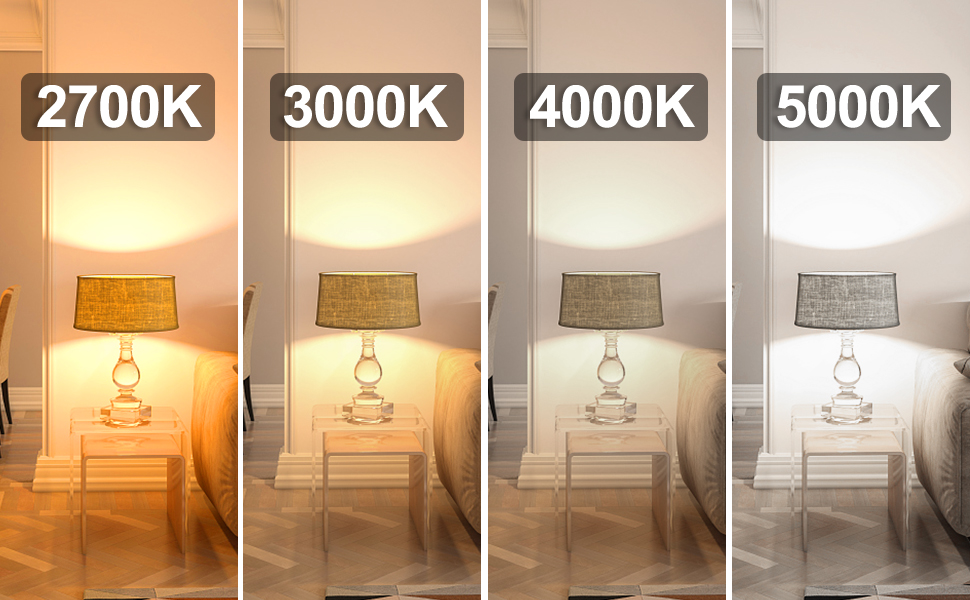
There are different types of bedroom lighting color temperatures that you can choose from.
Each one has its own set of benefits and drawbacks, so it’s important to understand what they are before making a decision.
2700K
2700K lights are near to perfect for Bedroom Lighting because:
- They emit a warm, yellow light that is relaxing and calming.
- They are not as bright as other types of lighting, so they won’t disturb your sleep.
- It looks good in a bedroom with more traditional decor and can highlight earthy tones that are darker in color.
3000K
3000K lights are perfect for Bedroom Lighting because:
- You don’t get as much yellow, but you also don’t get a blue-ish color that comes with higher color temperatures like 4000K and 5000K.
- They provide a good amount of light without being too bright.
- They work well in bedrooms with more modern decor.
3500K
3500K lights are not as perfect for Bedroom Lighting because:
- The light is a bit too blue for a relaxing environment.
- They can be harsh on the eyes and may disturb your sleep.
- They work well in bedrooms that have more contemporary or modern style decor.
Also read: Difference between Soft White vs Daylight Bulbs
How to Choose Bedroom Lighting Color Temperature
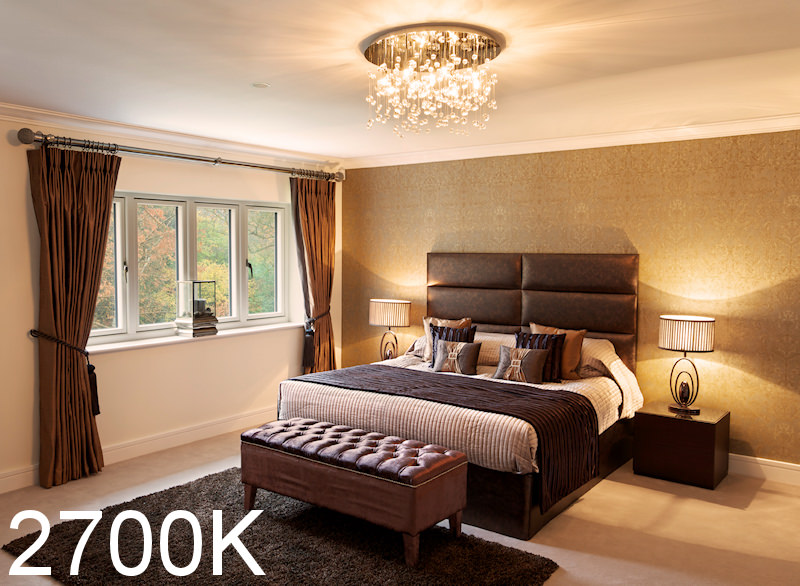
Now that you know the different types of bedroom lighting color temperatures available, let’s take a look at some of the factors that you need to consider when making your decision.
The Size of Your Bedroom
The first factor to consider is the size of your bedroom. If you have a small room, you might want to avoid using harsh, bright lights as they can make the space feel even smaller. Instead, opt for softer, more diffused light sources.
On the other hand, if you have a large room, you can afford to be more creative with your lighting choices. You could use a combination of different light sources to create different zones in the room, or you could experiment with more unusual light fixtures.
Must read: How to choose perfect lighting color temperature for Kids Room
The Color of Your Walls
Another factor to consider is the color of your walls. If you have light-colored walls, you might want to use a brighter light source to make the space feel more open and airy. However, if you have dark-colored walls, you might want to use a softer light source to create a more intimate atmosphere.
Your Bedroom’s Style
The style of your bedroom will also play a role in choosing the right lighting. If you have a more traditional-style bedroom, you might want to opt for warm-toned lights that will highlight earthy tones in your decor. However, if you have a more modern bedroom with multiple appliances in it like Home Theatre, Television, and more, you might want to choose cooler-toned lights that will complement your sleek, contemporary furnishings.
Your Personal Preferences
Of course, the most important factor to consider when choosing bedroom lighting is your personal preferences. Think about the kind of atmosphere you want to create in your bedroom and choose a light source that will help you achieve that goal. If you’re not sure what you want, it might be helpful to browse through some interior design magazines or websites for inspiration.
Also read: How to choose the right bathroom color temperature
Conclusion
In conclusion, choosing the right color temperature for bedroom lighting in 2023 is more than just a matter of personal taste; it’s about enhancing comfort, ambiance, and overall well-being. As we understand more about the impact of light on human health, the importance of selecting a suitable color temperature becomes clear. For bedrooms, where relaxation and preparation for sleep are paramount, warmer color temperatures in the range of 2700K to 3000K are generally recommended. These warmer tones help to promote relaxation and increase the production of melatonin, the hormone responsible for regulating sleep cycles, making it easier to wind down at the end of the day.
Moreover, with the advent of smart lighting technology, homeowners now have unprecedented control over their lighting environments, making it possible to adjust color temperatures according to different needs and times of day. For instance, brighter and cooler lights may be beneficial in the morning to help simulate natural daylight and aid in waking up, while softer, warmer lights can be used in the evening to signal the body that it’s time to prepare for sleep. By considering these factors, along with the quality and type of light fixtures, you can create a lighting scheme that not only looks great but also conforms to the latest research on sleep hygiene and circadian rhythms. Ultimately, the goal is to choose a bedroom lighting setup that not only enhances the aesthetics of the room but also supports a healthy, restful night’s sleep.

